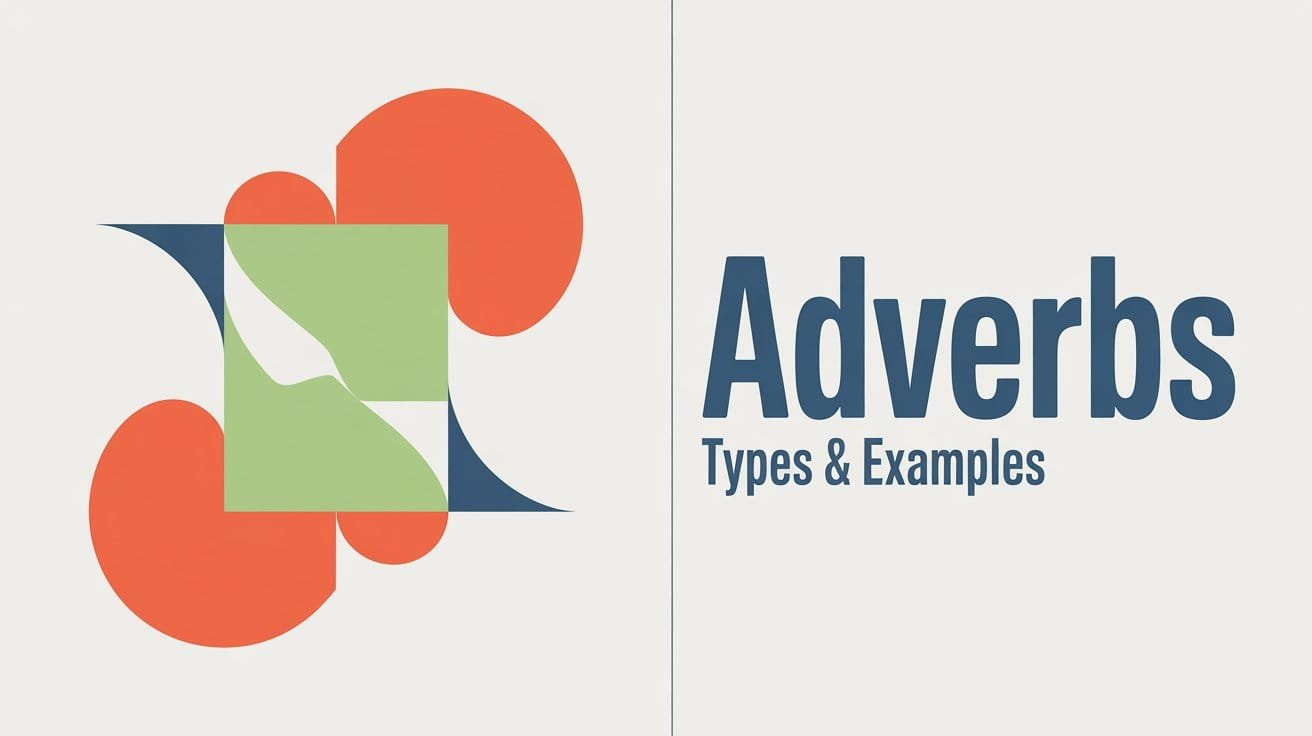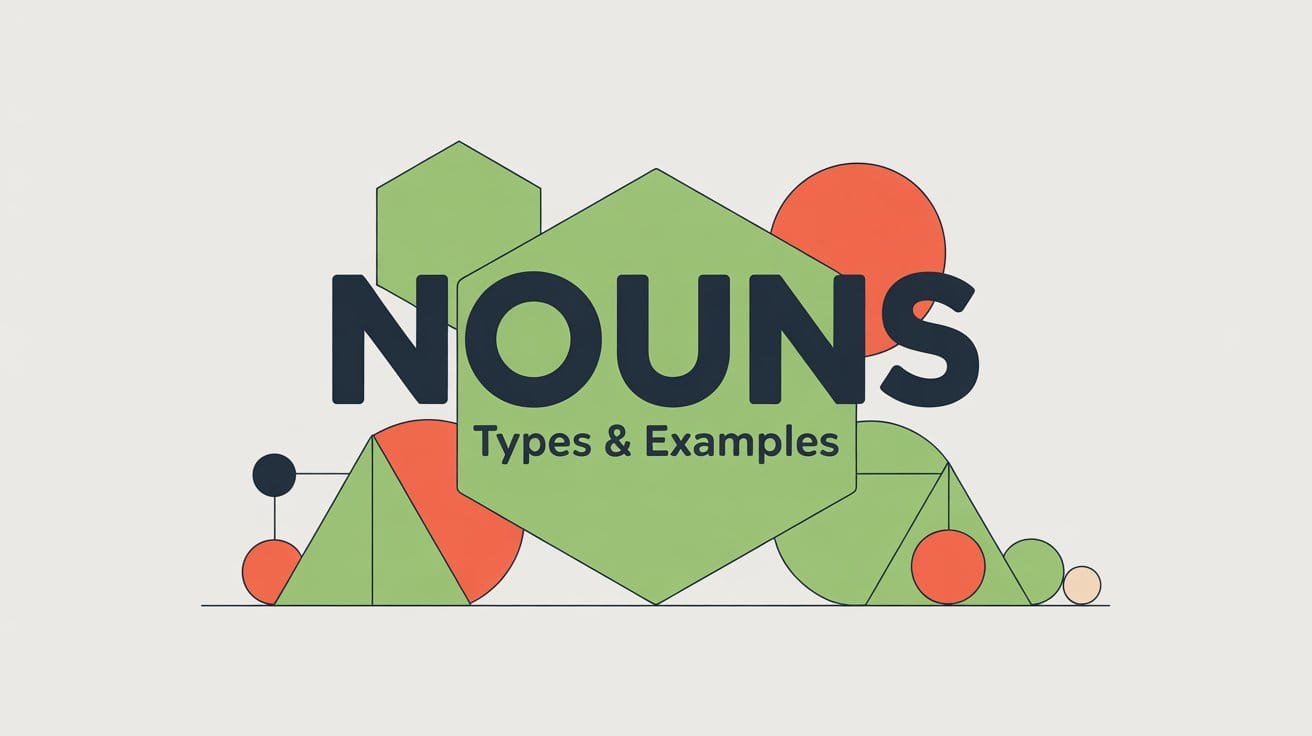Adverbs are an essential part of English, making our sentences more engaging and expressive. They provide information about verbs, adjectives, and even other adverbs.
Through this article, we’ll explore the different types of adverbs and understand their importance in the English language learning. Also, we’ll learn how to use them correctly to make our writing and communication more engaging.
What is an Adverb?
An adverb is a special type of word that adds more information to a verb, adjective, or even another adverb in a sentence. Adverbs describe how, when, where, and to what extent an action takes place.
One of the simplest ways to create an adverb is by adding the suffix –ly to an adjective. For instance, when we add –ly to “quick,” it magically transforms into “quickly.” But beware, not all adverbs follow this rule! Some, like “never,” “always,” or “soon,” don’t need the suffix –ly.
Adverb Examples: Here are some sentences featuring adverbs,
- The dog barks loudly at the mailman.
- He speaks quietly during class.
- The baby laughs happily when tickled.
- The little girl dances beautifully on stage.
- The teacher explains patiently to the students.
Importance of Adverbs in English Language Learning
Learning adverbs is crucial for becoming a skilled English communicator. They help us express ourselves more effectively, allowing us to paint vivid pictures with our words and engage our readers or listeners. Without adverbs, our sentences may sound dull and lack the necessary details to convey our thoughts accurately.
How Adverbs Add Depth and Clarity to Sentences
Adverbs play a vital role in sentence construction by providing extra information that other parts of speech cannot. Let’s see how they add depth and clarity to sentences:
| Sentence without Adverb | Sentence with Adverb |
| She ran. | She ran quickly. |
| The dog barked. | The dog barked loudly. |
| He speaks. | He speaks very softly. |
Types of Adverbs
Now, let’s discover the various types of adverbs and how they play different roles in our sentences.
Types of adverbs are:
- Adverbs of Manner
- Adverbs of Frequency
- Adverbs of Time
- Adverbs of Place
- Adverbs of Degree
- Interrogative Adverbs
Adverbs of Manner
Adverbs of manner show how an action is performed, or tell the way something happens. They usually end in –ly, such as quickly, slowly, and happily.
Here are some examples of adverbs of manner in a sentence:
- Ruby ran quickly to catch the bus.
- They spoke softly to avoid waking the baby.
- The children danced happily in the rain.
Adverbs of Frequency
These tell us how often an action occurs. They let us know if something happens regularly or just occasionally. Examples include always, often, rarely, and never.
Observe the adverbs of frequency in below sentences:
- Sara always arrives on time for class.
- Mark often goes to the park to play basketball.
- They rarely eat ice cream during winter.
Adverbs of Time
They inform us about when an action takes place. They are like little time-traveling guides within sentences. Now, yesterday, and soon are some examples.
Examples: Adverbs of time in a sentence
- We will go to the zoo tomorrow.
- She finished her homework yesterday.
- The concert will start soon.
Adverbs of Place
Adverbs of place indicate the location of an action or provide context about where something happens. Here, there, and nearby are common adverbs of place.
Let’s see some example sentences:
- The keys are here on the table.
- They searched for the treasure there.
- The bakery is nearby.
Adverbs of Degree
Adverbs of degree help express the intensity or degree of an action or adjective. They make our statements more vivid. Very, too, and quite are examples of adverbs of degree.
Observe these examples to understand adverbs of degree in a sentence:
- The pizza is very delicious.
- It’s getting too hot outside.
- She was quite tired after the long hike.
Interrogative Adverbs
Interrogative adverbs are question words that we use to ask for more information about the action or situation. They include how, when, and where.
Let’s take a look at some sentences using Interrogative Adverbs:
- How did you solve the math problem?
- When will the movie start?
- Where is the nearest library?
Adverbs vs. Adjectives
It’s essential to differentiate between adverbs and adjectives, as they both describe things but in different ways. Adverbs describe verbs, adjectives, or other adverbs and usually end in -ly. Adjectives, on the other hand, modify nouns or pronouns and do not end in -ly. They give details about the people, places, and things in our sentences.
Adverb Examples:
- He quickly ran to catch the bus. (Modifying the verb “ran”)
- The flowers in the garden bloom beautifully. (Modifying the verb “bloom”)
- She speaks very softly in the library. (Modifying the adverb “softly”)
Adjective Examples:
- The yellow sun sets over the horizon. (Describing the sun)
- She wore a beautiful dress to the party. (Describing the dress)
- The tall giraffe gracefully roamed the savannah. (Describing the giraffe)
Let’s take a closer look at how adverbs and adjectives work in different sentences:
| Sentence | Adjective | Adverb |
| She has a big dog. | Big (describing the noun “dog”) | – |
| She quickly walked her dog. | – | Quickly (modifying the verb “walked”) |
| The red car is parked outside. | Red (describing the noun “car”) | – |
| He drove the car carefully. | – | Carefully (modifying the verb “drove”) |
In the first row, the adjective “big” describes the noun “dog,” whereas in the second row, the adverb “quickly” modifies the verb “walked.” Similarly, in the third row, the adjective “red” describes the noun “car,” and in the fourth row, the adverb “carefully” modifies the verb “drove.”
How to Use Adverbs Correctly
Using adverbs correctly is vital to ensure that our sentences make sense and convey the intended meaning. Here are some guidelines to follow:
- Proper Adverb Placement: In a simple sentence, adverbs typically come after the verb, but they can also appear before the verb when emphasizing the adverb.
- He quickly finished his homework.
- She always arrives on time.
- Avoiding Common Adverb Usage Errors: Some adverbs are frequently misused or confused with adjectives. One common mistake that people often make is using an adjective instead of an adverb.
- Incorrect: The car drives real fast.
- Correct: The car drives really fast.
Other Types of Adverbs
Apart from the main types we’ve explored, there are a few additional types of adverbs that are worth mentioning:
Conjunctive Adverbs
Conjunctive adverbs act as connectors in sentences, linking ideas together. Examples include “therefore,” “however,” and “meanwhile.”
- Sarah studied hard for the exam; however, she did not perform as well as she had hoped.
- She studied hard; therefore, she aced the test.
Focusing Adverbs
Focusing adverbs emphasize a particular part of the sentence, often with words like “only” or “just.”
- I only wanted to borrow your history book.
- The museum just acquired a rare, ancient artifact for its collection.
Relative Adverbs
Relative adverbs relate to a noun and introduce relative clauses. Examples include “where,” “when,” and “why.”
- I know the place where we first met.
- Do you remember the day when we went to Central Park?
Commonly Confused Adverbs
Some adverbs are commonly misused or misunderstood. Here are a few examples:
1. Well vs. Good
It’s easy to mix up “well” and “good” when describing someone’s ability in an activity. Remember that “well” describes the verb, showing how the action is performed, while “good” describes the noun, indicating the quality of the person or thing.
Well (Adverb): This adverb refers to how something is done and is used to describe verbs.
Example: She sings well in the choir.
Good (Adjective): This adjective refers to the quality of someone or something and is used to describe nouns.
Example: He is a good singer.
2. Bad vs. Badly
Similar to “well” and “good,” the confusion between “bad” and “badly” arises when describing how an action is performed. “Bad” is used to describe a noun, expressing poor quality, while “badly” describes the verb, indicating how the action was done.
Bad (Adjective): This adjective refers to the poor quality of something or someone.
Example: The movie was bad; the plot was confusing.
Badly (Adverb): This adverb refers to how something is done and is used to describe verbs.
Example: She danced badly at the talent show.
3. Hard vs. Hardly
The distinction between “hard” and “hardly” lies in their meanings and usage. “Hard” describes the effort put into an action, while “hardly” conveys the scarcity or near absence of an action.
Hard (Adverb): This adverb refers to the intensity or difficulty of an action and is used to describe verbs.
Example: She worked hard to finish the project on time.
Hardly (Adverb): This adverb means “almost not” or “scarcely” and is used to describe the frequency or extent of an action.
Example: He hardly ever misses his morning jog.
Importance of Adverbs in English Writing
Adverbs play a crucial role in making your writing more expressive and meaningful. Here’s why they are so essential:
Enhancing Sentence Flow and Rhythm
Adverbs add flair to your sentences, making them flow smoothly. They make your writing sound less monotonous and more engaging.
For example, “She danced gracefully, swirling through the air like a ballerina.”
Without the adverb, the sentence would sound flat: “She danced and swirled through the air like a ballerina.”
Conveying Emotions and Attitudes
Adverbs help you express emotions, attitudes, and feelings in your writing. They allow you to show excitement, sadness, or any other emotion vividly.
Here’s an example: “He happily offered to help his friend move.”
Without the adverb, the emotion is lost: “He offered to help his friend move.”
Conclusion
Congratulations! You’ve now unlocked the power of adverbs and their incredible abilities to add color, depth, and expression to your English writing and communication. Mastering adverbs will undoubtedly elevate your language skills and make you a more confident communicator. So, go ahead and sprinkle some adverbs into your sentences, and watch them come alive with energy and meaning!



